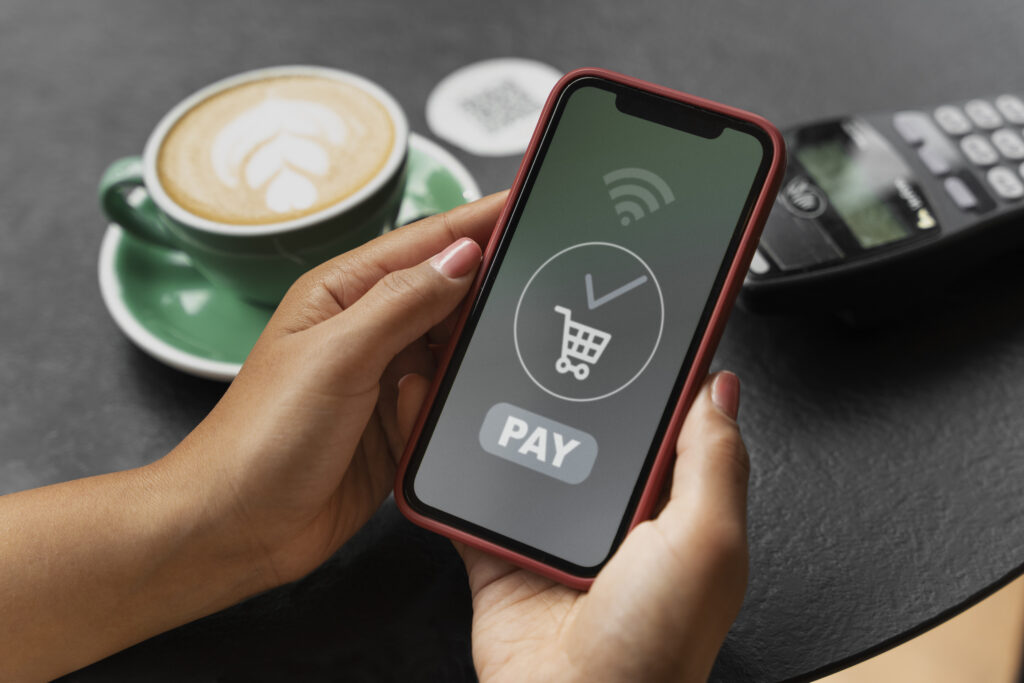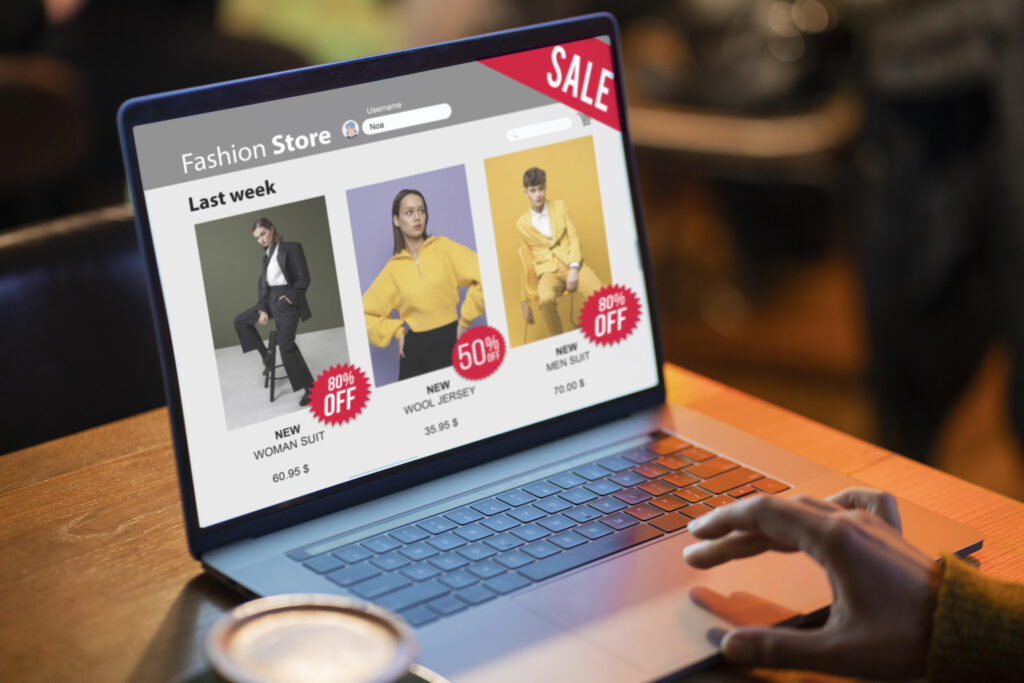A successful online store is not built on aesthetics alone, it is powered by meticulously crafted functionality. The right E-commerce Website Features eliminate hesitation, cultivate trust, and drive the customer directly to the checkout. Ignoring these core elements is the quickest way to inflate your bounce rate and watch conversions plummet.
For ambitious brands ready to scale, here is the detailed breakdown of the 10 essential features that translate traffic into revenue.
1. Mobile-First Responsive Design: The Essential Foundation📱
With the majority of web traffic and a rapidly increasing share of purchases happening on smartphones, a responsive design is no longer a luxury it’s a requirement. A mobile-first approach means designing the site for the smallest screen first, then scaling up.
Why it Drives Sales:
- Reduced Bounce Rate: Visitors leave instantly if a site loads slowly or is difficult to tap on mobile.
- SEO Advantage: Google prioritizes sites optimized for mobile. A poor mobile experience tanks your search ranking.
- Frictionless Shopping: Buttons and forms are large and touch-friendly, allowing customers to check out on the go with minimal effort.
2. Powerful Site Search and Filtering: The Discovery Accelerator🔎
Why it Drives Sales: Customers who use the search bar are often deep in the purchase funnel, they know what they want. Your search function acts as a personal concierge. If it fails, you lose a high-intent buyer. For large inventories, advanced filtering is non-negotiable, turning an overwhelming catalog into a curated shopping experience.
How to Implement Detail:
- Auto-Suggest & Error Correction: The search bar should offer predictive text (showing results as the user types) and be intelligent enough to correct common misspellings (e.g., searching “sneekers” still brings up “sneakers”).
- Hierarchical Filters: Provide filters relevant to the specific product category (e.g., “Material” for clothing, “Storage Size” for electronics, or “Dietary Needs” for food).
- Zero-Result Strategy: If a search yields no results, don’t just show a blank page. Display popular categories, offer support, or suggest products with similar keywords.
3. High-Quality Product Media: The Visual Confidence Builder 📸
Why it Drives Sales: Online shopping is inherently sensory deprived. High-quality visuals are your only tool to bridge the gap between imagination and reality. Investing in professional photography and video significantly reduces buyer uncertainty and is a primary factor in minimizing product returns.
How to Implement Detail:
- Multi-Angle Imagery: Provide high-resolution, zoomable photos showing the product from all angles, including close-ups of texture or detail.
- Product Videos: Embed short (30–60 second) videos demonstrating the product in use, showing its scale, or highlighting its key features.
- Rich Descriptions: Supplement the visuals with engaging, benefit-driven copy. Include detailed technical specifications, size guides, and care instructions to preemptively answer all possible questions.
4. Authentic Social Proof: Establishing Immediate Trust⭐
Shoppers are inherently skeptical. The fastest way to overcome this skepticism is by showing real, verified experiences from other buyers.
Why it Drives Sales:
- Reviews and Ratings: Displaying star ratings (especially on product listing pages) and detailed customer reviews on the product page is essential.
- User-Generated Content (UGC): Featuring photos or videos of real customers using the product (e.g., from Instagram feeds) is more trustworthy than professional marketing shots.
- Trust Seals: Integrating security badges and showcasing positive media mentions further validates your brand. This suite of E-commerce Website Features transforms hesitation into trust.
5. Streamlined Guest Checkout: Minimizing Purchase Friction🛒
Why it Drives Sales: Requiring account creation is one of the biggest reasons customers abandon their carts they are ready to buy, but they don’t want the commitment or the extra time it takes to register. A frictionless checkout process respects the customer’s time and focuses solely on completing the transaction.
How to Implement Detail:
- Mandatory Guest Checkout: Always offer a clear “Continue as Guest” option.
- Form Field Optimization: Use auto-fill and address validation features to reduce typing. Only ask for information strictly necessary to process the order (name, address, payment details).
- Progress Indicator: Clearly display a visual map of the checkout process (e.g., Cart » Shipping » Payment » Review), so the customer knows exactly where they are and how many steps remain.
6. Multiple Secure Payment Options: Catering to Global Preferences💳
Why it Drives Sales: If a customer’s preferred payment method is unavailable, they often assume your business is either outdated or insecure, leading to an immediate lost sale. By offering diverse and recognizable payment gateways, you cater to a wider audience (including international buyers) and significantly boost perceived security.
How to Implement Detail:
- Core Integrations: Support major credit/debit cards (Visa, Mastercard, Amex).
- Digital Wallets: Integrate one-click options like PayPal, Apple Pay, and Google Pay.
- BNPL Services: Integrate Buy Now, Pay Later options (e.g., Afterpay, Klarna) for higher-priced items, helping to spread the cost and dramatically boosting conversion rates on expensive products.

7. Personalized Product Recommendations: The AOV Booster🎁
Why it Drives Sales: Static websites present the same content to everyone. Modern E-commerce Website Features use AI to tailor the shopping experience, suggesting relevant items based on a user’s real-time behavior. This highly effective method guides the customer to items they may not have considered, directly increasing the average order value (AOV).
How to Implement Detail:
- Cross-Sell Placement: Use “Customers Also Bought” on the cart or checkout page.
- Upsell Placement: Feature a “Compare with the Premium Model” recommendation on the product page.
- Relevance: Use algorithms to suggest items truly related to the customer’s current product or browsing history, ensuring the recommendations are relevant, not random.
8. Real-Time Inventory and Scarcity Indicators: Creating Urgency⏳
Why it Drives Sales: The psychological principle of scarcity is a powerful motivator. Letting customers know that stock is low creates a fear of missing out (FOMO), encouraging them to complete the purchase immediately rather than waiting. Real-time updates also prevent the negative experience of completing an order only to be told the item is out of stock.
How to Implement Detail:
- “Low Stock” Flag: Display a prominent warning when inventory drops below a specific threshold (e.g., “Only 5 left!“).
- “High Demand” Metric: Use indicators like “24 people viewing this right now” to confirm popularity and urgency.
- Back-in-Stock Alerts: For sold-out items, offer an email sign-up option so you can capture the intent and market to the customer later, retaining the potential sale.
Must Read: Step-by-Step Guide: Setting Up Google Analytics on Your WordPress Website in 2025
9. Prominent Contact and Support Channels: The Trust Signal 💬
Why it Drives Sales: Any purchasing question from “Does this come in green?” to “How much is shipping?” can halt a sale if the answer isn’t instantaneous. Visible and accessible customer support is a critical E-commerce Website Feature that reduces buyer anxiety and converts on-the-fence visitors.
How to Implement Detail:
- Live Chat/Chatbot: Integrate a floating live chat widget that offers instant answers to common FAQs, available across all pages.
- Visible Contact Info: Place a customer service phone number and email address in the footer and on the contact page.
- Knowledge Base: Maintain a searchable, robust FAQ or Help Center to allow self-service resolution for common issues like returns, sizing, and warranties.
10. Transparent Shipping, Tax, and Return Information: Eliminating Surprises🏷️
Why it Drives Sales: Hidden fees are the single largest contributor to cart abandonment. Customers hate surprises at checkout. By providing upfront clarity on all costs and offering a risk-free purchasing environment via clear return policies, you eliminate the final hurdle to conversion.
How to Implement Detail:
- Upfront Cost Calculation: Integrate a geo-location or ZIP code tool in the cart to calculate and display the total cost (including tax and shipping) before the customer enters checkout.
- Clear Return Policy: Link your return, refund, and exchange policies prominently in the footer and directly on the product page. Policies should be generous and easy to understand (e.g., “30-Day Hassle-Free Returns”).
- Post-Sale Visibility: Offer seamless order tracking and automated email/SMS updates on the shipping status, extending the transparent experience past the moment of sale.
By building your online business around these 10 essential E-commerce Website Features, you shift your focus from simply displaying products to actively selling them, ensuring a profitable and sustainable operation.
So, are you ready to transform your site from a digital catalog into a high-powered revenue engine? Don’t leave sales on the table. Contact us today to discuss integrating these essential E-commerce Website Features and build a storefront designed for conversion.


